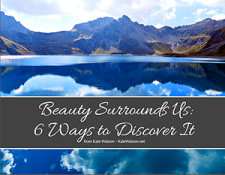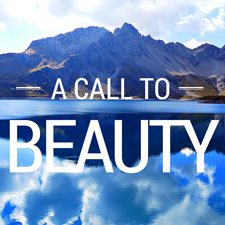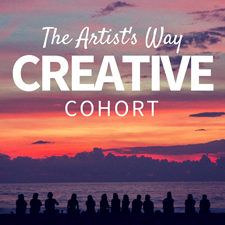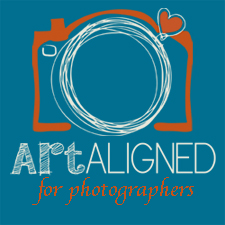As I mentioned in Thursday’s post, I have been debating a friend about what makes a photograph: emotional quality, technical expertise or something else.
I started by asking my husband and my father what photographs were most memorable to them, and when my father pointed out that emotion was required to make something memorable, I decided to tweak my question so that it would be less biased. I then asked blog readers, Facebook friends and the Twitterverse: What is the most extraordinary photograph you’ve ever seen?
Did changing the adjective from memorable to extraordinary change the responses? Yes and no.
The first response after the word change cited works by Ansel Adams, Joel Peter-Witkin, Chuck Close and Lewis Carroll (below left) as the most extraordinary, stating that “they all blew my mind a little.” For me, this comment signaled a shift from emotional connection to a greater appreciation of technique and aesthetics.
The next response, however, proposed Richard Avedon‘s portrait of Marilyn (below right), specifically because Marilyn’s expression was “so raw and reflective.” It appears that an emotional connection was the key there.
Then, one of my photographer friends suggested two portrait photographers, whose work “has a wow flare with surreal composition and use of textures!!!!!!,” so back to a focus on technical excellence.
As more responses trickled in, the answers alternated between those emphasizing technical merit and those focusing on emotional connection. In terms of the photographers behind the selected images, there was a clear departure from the first round. The “extraordinary” batch comprised landscape, fine art and portrait photographers whereas the “memorable” group had been photojournalists exclusively.
One of my former clients — sweet lady that she is — then suggested two photos I’d taken of her family.
Another photographer friend suggested Migrant Mother (below left), documentary photographer Dorothea Lange‘s most famous image, which he said was chosen for the balance of emotion and technical.
Then, my cousin suggested photojournalist Alfred Eisenstaedt‘s VJ Day kiss (below right).
A photographer from Tokyo suggested Dan Winters’ portrait of Helen Mirren, which is technically stunning:
 (c) Dan Winters And then my friend, Stacie, said, “This photo by war photographer James Nachtwey is extraordinary because this famine victim was still alive 🙁 It’s very disturbing”:
 (c) James Nachtwey As you can see, the word “extraordinary” prompted a lot of back and forth between pure technical excellence and gut-clenching emotion. When all the results were tallied, we were dead even. So the question remains: Is extraordinary photography a result of technical excellence or emotional resonance?
I could say its both, but instead, I’m going to agree with my photographer friend’s assertion that truly great photography is more about how it makes you feel inside than how it looks on the outside. And, of course, my choice has everything to do with who I am and what kind of photographer I am.
So, what do you think? Are extraordinary photographs a result of technical excellence, emotional resonance or a combination of both? Whatever you decide, I think it says a lot about who you are as an artist (and human).
Cheers,

I’ve been having a debate with a photographer friend about what makes a photograph. Not in the literal sense — I’m pretty sure we’ve all heard of cameras 😉 — but what makes a photograph the amazing creation it is? Is it technical excellence? Emotional quality? Beautiful composition? Shock factor?
So, at dinner the other night, I asked my hubby, “What is the most memorable photograph you’ve ever seen?” He chose, in rapid succession, three:
- Afghan Girl – Steve McCurry, cover of National Geographic in June 1985 (below left)
- Srinagar – Henri Cartier-Bresson, 1948 (below center)
- Kent State massacre – John Filo, 1970 (below right)
Interesting, I thought. They’re all by photojournalists: one, a portrait, and the other two, in the moment.
I asked my father the same question, and he replied:
“Two spring to mind. Jackie holding JFK in the back of the limo in Dallas, and the fireman wiping his brow of the dust from the collapse of the World Trade Center towers.”
Again, photojournalism. The point my photographer friend had been trying to make — that emotional impact outweighs technical excellence — had definitely been made.
Then, my father added something: “Of course, my baby pictures are right up there. And you in [your grandmother’s] shoes and hat.”
While our family photos don’t rank among world-changing, most memorable photographs, I understand why they would be memorable to one man reflecting upon his life. So, I asked him if there was a difference between being memorable and excellent (or the best).
“Memorable means stands out in memory, usually a visceral or emotional response. ‘Best’ can mean most beautiful, maybe not as jarring but something that brings comfort. We remember what startles us, we cherish what makes us feel better.”
Nicely put, Dad.
So, if emotional impact is required to make photographs memorable, I wondered what would happen if I used a different adjective to modify photography. I then asked blog readers, Facebook friends and the Twitterverse: What is the most extraordinary photograph you’ve ever seen?
Do you think it changed people’s responses? Stay tuned.
Cheers,

Quick: Think of the most extraordinary photograph you’ve ever seen.
Got it? Now, please describe it in the comments below, including the photographer’s name and any technical details you know (camera and lens choice, lighting, etc.) If you don’t know the deets, it’s all good. A link to the image is also great!
I’ll be back later this week with the results of this informal poll and my own thoughts on the subject.
Thanks for your help,

 Gratitude (c)Corinna Luyken, via Etsy Today, as Americans pause to express gratitude for our blessings, I’d like to share what I am most grateful for:
Having loving, supportive friends and family
When I think about what I am most grateful for these days, it always comes back to having friends and family who care.
Two weeks ago, I began training to become a court-appointed special advocate (CASA), a volunteer position working with and advocating for abused and neglected children. Those who know me best will know that I have felt called to this population for years. In fact, Brian and I are considering foster-adoption one day. On Monday, as part of my training, I attended a court proceeding during which it was decided that a young girl couldn’t return home this Thanksgiving, for her own safety.
Those of us who are able to spend time this holiday with loving friends or family are so blessed! We often think of the holidays and family visits as obligations, but today I would like to express gratitude for having people in my life that genuinely care about me, and with whom I feel safe and supported. Not everyone is so lucky. Thank you, friends and family!
And because expressing gratitude to all of my friends and family at one time seems insufficient, I have a few people for whom I’m particularly grateful today:
My husband
Since returning to California, I have been doing a lot of soul searching about next steps. Would I return to professional photography, focus on Art Aligned, or reenter the traditional workforce? My ability to take the necessary time to make these decisions is due solely to the beneficence of my husband, Brian, who is ensuring that we’re housed and fed, and who says that he just wants me to be happy, whatever I decide. Although no one is perfect, Brian is just about perfect for me. So, thank you, love!
Corinne
A couple of weeks ago, I emailed my friend Corinne that I had a “desperate desire to photograph love,” and asked if she and her baby girl were available, like, immediately. She said, “Sure, come on by!” and, as a result, my photographic recovery progressed one more step. Photographing Corinne and Phippslette (baby girl) gave me the opportunity to enjoy the process of connecting with my photography subjects and helped me to appreciate the experience as much as, if not more than, the results.
A special shout out here to Alan, who impressed upon me the importance of enjoying the experience of photography and letting go of the need for perfect results.
Ariane
My new friend, Ariane, who I “met” through a course we took together earlier this year. Ariane has a lovely and generous spirit, and I am so happy to be collaborating with her on a free guide that will be launched in January. Details coming soon, I promise.
Dani & Mike
And one more special thanks to Dani & Mike, who moved this week, but who are still opening up their home to host Thanksgiving dinner tonight. You are miracles. Crazy, but also miracles. 😉
I am deeply grateful to all of my family and friends, and wish everyone reading this a beautiful, peaceful, love-filled day.
Cheers,

This weekend, while browsing the Celebration of Craftswomen in San Francisco, I was reminded of how to cultivate patrons, the people who are genuinely interested in what you’re doing, adore your work and consistently buy from you.
 My new necklace, Persephone by Kelly Morgen Let me tell you a story: I discovered one of my favorite jewelry artists, Kelly Morgen, in 2008. I was wandering the Mountain View Art & Wine Festival. Kelly was talking to someone when I walked by, so I made a note of her name and “Googled” her when I got home. For two years, I periodically visited her website or Facebook page, but took no other action. Then, last fall, while my husband and I were traveling, I decided that I simply had to have one of her necklaces and so I emailed, asking if she would send it to me in New Zealand. She did and I wore it throughout the remainder of our trip.
Upon returning to the States, I thought of Kelly when brainstorming artists to interview for this blog. Then I moved back to California and saw her at this year’s Art & Wine Festival, where I fell in love with another of her pieces, this one almost four times the cost of the first. I wasn’t sure about the small stone set in the piece, so she volunteered to swap it out at no charge. Of course, I bought it and now wear it all the time.
All of the above was just the beginning, however. Now I’m truly hooked! I saw Kelly again at this past weekend’s Celebration of Craftswomen and I am already planning my next purchase, though I’m still deciding between three possibilities: a piece already available, a custom piece based on an art nouveau print I love, or one of a series I know she’s releasing in the spring.
Steps to cultivate patrons
When you read the story, it seems like everything happened by chance, doesn’t it? As if Kelly had no impact on my decisions and no control over my experience. But that’s not really true. So, what did she do? She:
- Showed her work in an eye-catching way at a local craft fair.
- Invited me to join her newsletter, which she used to talk about new pieces and upcoming events.
- Offered a takeaway (business card, postcard, etc.) so that I could remember who she was.
- Published a website and a Facebook page where I could learn more.
- Promptly shipped my international order and sent along a sweet note with it.
- Generously shared her time for an interview.
- Offered to change out the stone of my new necklace at no charge, since it was an easy switch (well, it was meant to be, but that’s another story).
- Gave me extra business cards when I picked up my piece, so I could hand them out to people who asked about it (which I have).
- Consistently does quality work. The construction and beauty of my Lotus pendant gave me confidence to purchase a more expensive piece later.
- Continued to be friendly and welcoming during every encounter I’ve had with her.
Bottom line: Kelly had a bit more to do with my experience than it might first appear. None of the above is a trade secret, however, so I don’t think she would mind me sharing it with you. Everything is simply good business practices.
The story and the methods above are just one example of how you could cultivate your own patrons. It’s not the way all relationships progress, nor should you consider the list of things Kelly did to be a laundry list of shoulds for your business. I don’t believe in shoulds. I believe in doing what works for you.
However, I do encourage you to consider why you’re doing something and what your desired results are. When you’re at a craft fair, for example, you naturally want everyone who stops by your booth to purchase something, but what if they take longer to make decisions than that? What if they don’t have money today but will tomorrow? What if they want a large piece and have to save for it? By having a small takeaway such as a business card or promo card and somewhere they can go to find out more — whether a Facebook page, one-page website or full e-commerce site — you are allowing the seeds to be planted for a future patron. When you don’t have a follow-up strategy, you may encourage someone to make a small purchase for fear of losing the opportunity, but consider what you might be missing out on in the long run.
Cheers,

|




![]()

















Your extraordinary photographs » KateWatson.net - […] something memorable, I decided to tweak my question so that it would be less biased. I then asked blog readers, Facebook friends and the Twitterverse: What is the most extraordinary photograph you’ve […]
Art Aligned™ » Blog Archive » Your extraordinary photographs - […] Written on December 3, 2011 by Kate Watson in Artistry & inspiration As I mentioned in Thursday’s post, I have been debating a friend about what makes a photograph: emotional quality, technical […]